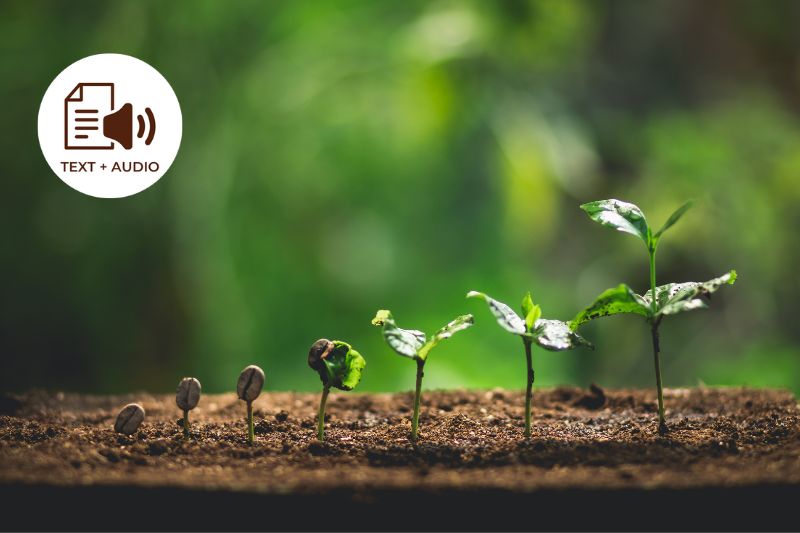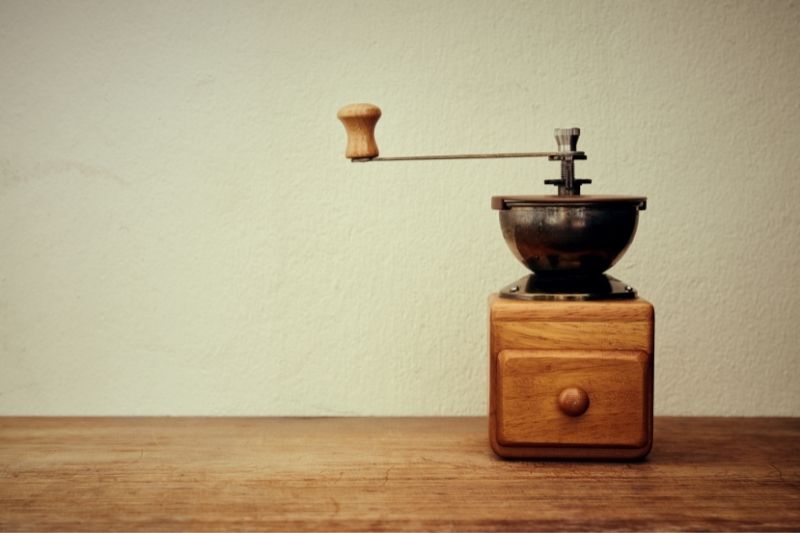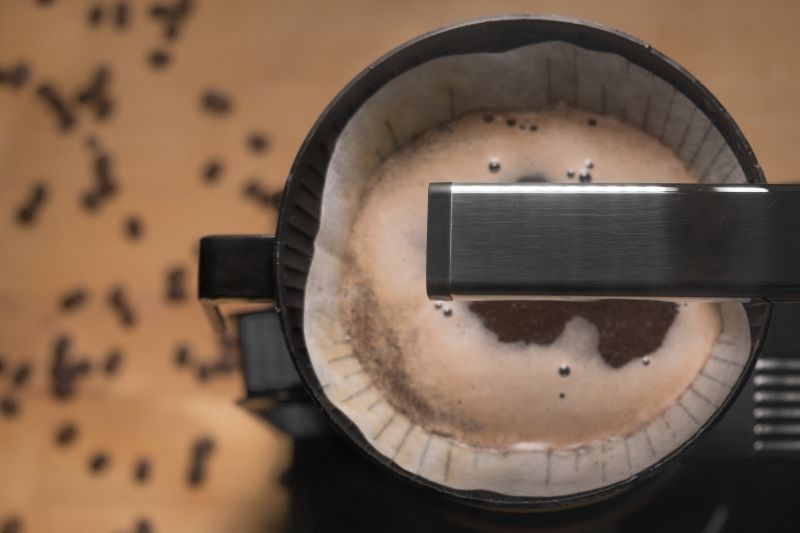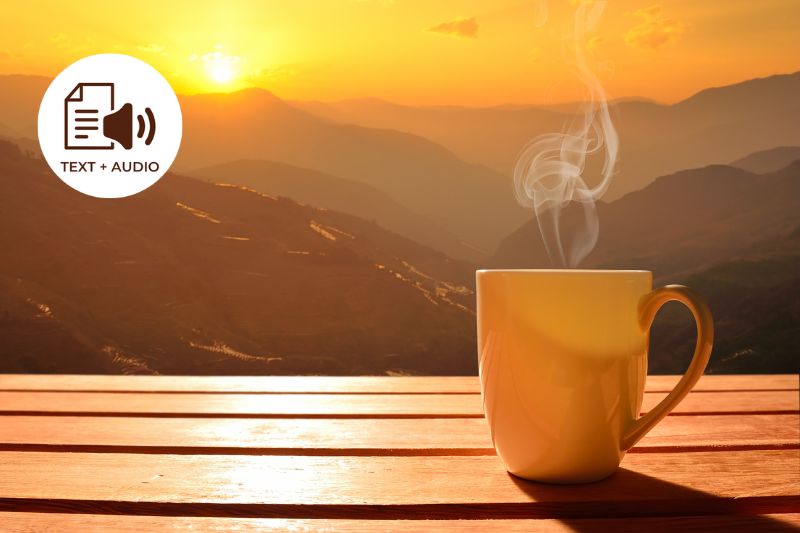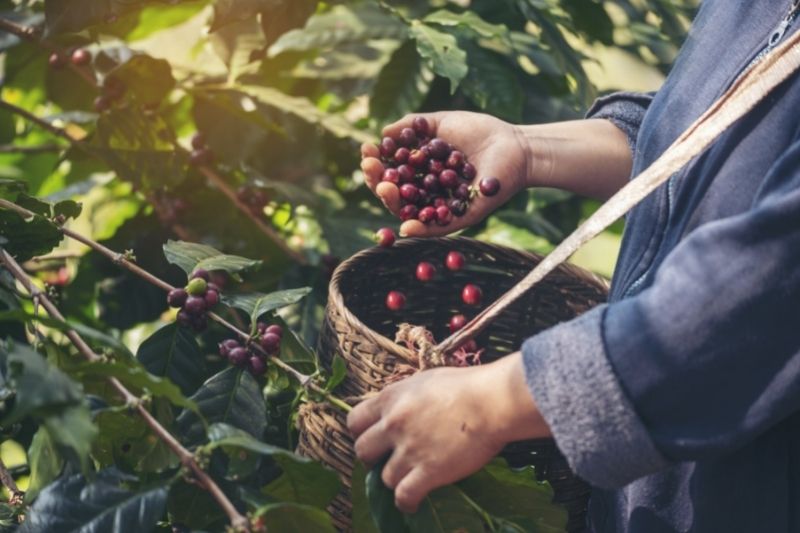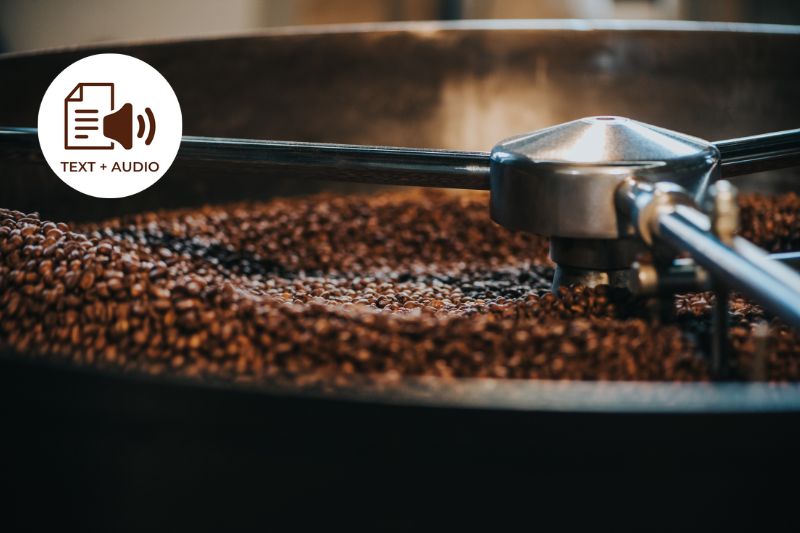Who doesn’t want a cup of coffee that is balanced, has a fantastic aroma and a wonderful aftertaste? Well, you can have all that once you realise all the factors that affect how your coffee tastes like processing, roasting, grinding and brewing.

For example, during brewing there are a few things that affect how your coffee tastes like water temperature, brewing method and brewing time, but the one of most important factors is the degree of grinding.
In this article I want to explain to you why this is the case and which grind suits your favourite brewing method best!
Let’s dive in!
Whole beans vs. ground beans
The quality of your cup of coffee depends primarily on the quality of the raw materials used, i.e. coffee beans. Secondly, the correct grinding process and brewing preparation play a major role.
The grinding of the roasted coffee beans is an essential requirement for the preparation of coffee drinks, because it increases the surface area of the beans for when they come into contact with water.
To put this plainly, if you steep whole coffee beans in hot water, you’ll get little to no results. Actually you will probably end up with hot water that has a hint of coffee flavour. That’s why you need to increase the surface area of the coffee bean, so that the water can extract all the flavours and aroma we all love!
There are around 1,000 aromas and flavors in every roasted coffee bean! (See this article about flavors in coffee) The grinding process changes the cell structure in the coffee beans since they essentially get crushed. This creates a lot of flavor substances which are released easily and quickly when dissolved in water.
The roasted coffee bean and its properties
The raw, unprocessed coffee bean contains various carbohydrates, lipids, proteins, acids, minerals and water. In its “raw” form however, coffee is inedible. Only the roasting process ensures that all the substances are released in water.
So, don’t try to brew coffee using raw coffee beans, I can guarantee you it will taste like grass. A coffee bean has around a million cells. When roasting more than 1,000 different compounds arise in these cells. These are the so-called aromas, of which only about 850 are known!

In addition to the formation of flavor compounds, the roasting process gives beans a dry texture.. This makes it easier to grind the coffee and increases the extraction capacity. The duration of the roasting process affects the hardness of the beans and thus ultimately the grinding.
The longer it is roasted, the darker and more brittle the coffee bean becomes, and thus it’s easier to grind it. (Refer this article for how roasting affect the coffee taste) On the other hand, light-roasted beans are harder to grind because of the higher moisture content which makes them more resistant to the grinder blades, therefore you’ll need a strong arm!
Why you need to grind your coffee
When grinding, depending on the degree of grinding, the surface of the coffee increases many times over. That also increases the contact surface for the water and thus enables the faster transfer of the soluble parts into the water and finally into the cup.
Just as an interesting example, filter coffee grind is “broken down” into around 500-800 particles, espresso grind into around 3,500 particles and with a very fine grind like for ibrik coffee the particles can be up to 30,000!

The degree of grinding, meaning the number and size of the particles in which a bean is crushed into, is critical to the extraction time. Extraction time is the total time that the water needs to get the desired aromas and flavours out of the coffee beans.
Depending on how the coffee is prepared, you need to be careful not to leave the coffee in contact with water for too long or not long enough, otherwise it won’t taste good!
Different Grinders
Probably the oldest method of grinding coffee beans is crushing them in a mortar, as is often done today during Jebena Buna, an traditional Ethiopian coffee ceremony. Even though this ceremony has a very meaningful impact on the coffee culture of Ethiopia, grinding coffee in a mortar is not a good practice because the particles will be completely uneven.
I would also not recommend the cheap 10-20 dollar grinders you can find in a few shops or online. They may be relatively inexpensive, but they don’t offer a homogenous result when it comes to grinding coffee. You will have a much better result with a mid-range electric mill.
However, if you consider yourself a coffee geek you could of course invest in a more expensive electric or manual mill and rest easy that your coffee will be ground to perfection every single time.
Grind size: filter coffee vs. espresso
Whether you are making espresso or filter coffee, the quality of your grind is essential. The entire flavor profile of the coffee is created during the grinding process. If there are gritty particles in your cup, it means that they were not ground to an optimal size. But how do you determine what that perfect size is?
Well, it depends on which brewing method you are using. Some methods like the French Press require a longer brewing time while others like the espresso machines yield a cup of coffee in seconds. Depending on the amount of water and the contact time with the water, the surface of the coffee bean has to be larger or smaller.

For manual preparations with hand infusion, French press or pour-over, the contact time with the water is usually several minutes. Coarser coffee should be more suitable for this type of preparation. If the coffee is ground too finely the extraction time will be extended, and there will also be more unwanted bitter substances and acids dissolved.
When preparing coffee with a fully automatic espresso machine or a classic portafilter machine is the water that is pushed through the bed of coffee with a large amount of pressure.
The coffee is in contact with the water for only 25-30 seconds. This means that the beans have to be ground very finely to make the extraction of flavours and aromas as quick as possible.
Final Thoughts
So it turns out that the grinding process can have a huge effect on how your coffee tastes! This article has given you a lot of information about the science behind how grinding affects coffee, and I hope that it will help you to make better decisions in your coffee brewing.
If this is something that interests you, you can also read our blog post on roasting ! You can also reach out to me with any questions or comments; I’d love to hear from you. As always, happy brewing!
Get Free Bonus Books

Sign up for free to the Coffee Club to get advice and exclusive articles about how to choose Japanese Coffee, and tips, tricks, and recipes for enjoying Japanese coffee.
About the author
Kei Nishida
Author, CEO Dream of Japan
Certification: PMP, BS in Computer Science
Education: Western Washington University
Kei Nishida is a passionate Japanese tea and coffee connoisseur, writer, and the founder and CEO of Japanese Coffee Co. and Japanese Green Tea Co., both part of Dream of Japan.
His journey began with a mission to introduce the world to the unparalleled quality of Japanese green tea. Through Japanese Green Tea Co., he established the only company that sources premium tea grown in nutrient-rich sugarcane soil—an innovation that led to multiple Global Tea Champion awards.
Building on this success and his passion for Japanese craftsmanship, Kei expanded into the world of coffee, pioneering the launch of Japanese Coffee Co., the first company to bring Sumiyaki charcoal-roasted coffee to a global audience. His dedication to authenticity and quality ensures that this traditional Japanese roasting method, once a well-kept secret, is now enjoyed worldwide.
Beyond tea and coffee, Kei has also introduced Japan’s legendary craftsmanship to the world through Japanese Knife Co., making handmade katana-style knives—crafted by a renowned katana maker—available outside Japan for the first time.
Kei’s journey continues as he seeks out and shares the hidden treasures of Japan, one cup and one blade at a time.
Learn more about Kei

